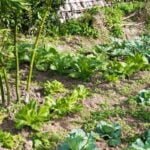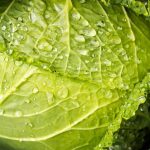Looking to start your own spring vegetable garden at home? Whether you’re a seasoned gardener or a beginner, these tips on spring vegetable gardening at home will help you get started. From planning and preparation to harvesting, this step-by-step guide will provide you with all the essential information for a successful and bountiful home garden.
When it comes to planning your spring vegetable garden, there are several important factors to consider. From choosing the right location to assessing your soil and making necessary amendments, proper planning can make a significant difference in the success of your garden. This section will offer valuable insights into the planning process and guide you through each step, ensuring that your garden gets off to a great start.
Once you’ve got your garden planned and prepared, the next step is selecting the right vegetables for spring planting. With a comprehensive list of suitable vegetables and tips on choosing the best varieties for your specific growing conditions, you’ll be well-equipped to make informed decisions when it comes to selecting the vegetables for your garden. Plus, consideration of climate and local growing conditions will help ensure that your choices are tailored to thrive in your specific environment.
Selecting the Right Vegetables for Spring Planting
When it comes to selecting the right vegetables for spring planting, there are several factors to consider. The first step is to choose vegetables that are well-suited for the spring growing season in your specific climate and local conditions. Some vegetables thrive in cooler temperatures, while others prefer warmer weather. Here is a comprehensive list of vegetables that are suitable for spring planting:
- Lettuce
- Spinach
- Radishes
- Carrots
- Peas
- Broccoli
- Cauliflower
- Cabbage
When selecting the best varieties for your garden, it’s important to consider factors such as disease resistance, yield potential, and flavor. Be sure to choose varieties that are known to perform well in your area and have qualities that are important to you as a gardener.
It’s also essential to take into account your local growing conditions when choosing which vegetables to plant. Consider factors such as average spring temperatures, frost dates, and sunlight exposure in your garden. By selecting vegetables that are well-suited for your specific growing conditions, you’ll set yourself up for a successful and bountiful harvest.
Once you’ve made your selections, be sure to plan out the layout of your garden carefully, taking into consideration the spacing requirements of each vegetable as well as any companion planting strategies you may want to implement. With these tips on selecting the right vegetables for spring planting, you’ll be on your way to a thriving and productive vegetable garden at home.
Preparing the Soil for Planting
As you prepare to start your spring vegetable garden, one of the most crucial steps is properly preparing the soil. Good soil preparation is essential for successful vegetable gardening, as it ensures that your plants have access to the nutrients, air, and water they need to thrive. Here are some valuable tips on soil preparation that will set the stage for a bountiful harvest in your home garden.
Firstly, it’s important to assess your soil’s quality and make any necessary amendments before planting. Conduct a soil test to determine its pH level and nutrient content. This will guide you in making informed decisions about what type of fertilizer and organic matter, such as compost or aged manure, to add to the soil.
Next, till or turn over the soil to break up compacted areas and improve its structure. This will also help with drainage and aeration, which are vital for healthy root development. Aim for a loose, crumbly texture that allows water and air to penetrate easily.
Finally, consider mulching your garden beds after planting. Mulch helps retain moisture in the soil, suppresses weed growth, and moderates soil temperature. Organic mulches such as straw or wood chips also break down over time, adding valuable organic matter to the soil.
Including these steps in your soil preparation process will provide a solid foundation for your spring vegetable garden and contribute to the overall health and productivity of your plants.
| Soil Preparation Tips | Details |
|---|---|
| Assess Soil Quality | Conduct a soil test to determine pH level and nutrient content. |
| Till or Turn Over Soil | Break up compacted areas and improve structure for better drainage and aeration. |
| Add Mulch | Mulching garden beds helps retain moisture, suppresses weeds, moderates temperature. |
Starting Your Vegetables From Seeds
One important tip for starting your vegetables from seeds is to make sure you are timing it correctly. Some vegetables need to be started indoors a few weeks before the last frost date in your area, while others can be directly sown into the garden once the soil has warmed up. Be sure to check the specific growing requirements for each vegetable you plan to start from seed.
Once you have everything ready, follow the instructions on the seed packets for proper planting depth and spacing. Keep the soil consistently moist and provide adequate sunlight or artificial light for at least 12-16 hours a day. As the seedlings grow, be sure to keep an eye on them and provide them with enough water and nutrients in order for them to thrive until they are ready to be transplanted into your garden.
By starting your own vegetables from seeds, you will not only have a wider variety of plants available to you but will also have a deeper understanding of how your plants grow from start to finish. This method provides great satisfaction as you witness your hard work come to life through healthy homegrown vegetables.
Transplanting Seedlings to the Garden
Tips on Properly Hardening Off Seedlings
Before transplanting your seedlings into the garden, it is crucial to harden them off. This process involves gradually exposing the tender plants to outdoor conditions, such as sunlight and wind. Start by placing the seedlings in a shaded, sheltered spot outdoors for a few hours each day, gradually increasing their exposure over the course of a week. This will help them acclimate to the outdoor environment and reduce the risk of transplant shock.
How to Transplant Seedlings Into the Garden Soil
When transplanting your seedlings, it is important to handle them carefully to avoid damaging their delicate roots and stems. Prepare your garden soil by loosening it with a garden fork or spade, then dig a hole slightly larger than the root ball of each seedling.
Gently remove the seedling from its container and place it into the hole, making sure that it sits at the same depth as it did in its original container. Fill in around the seedling with soil, gently firming it in place.
Techniques for Minimizing Transplant Shock
Transplant shock can occur when seedlings are moved from a controlled indoor environment to an outdoor garden. To minimize this stress on your plants, make sure to water them thoroughly before and after transplanting. Water-soluble fertilizer can also be applied to encourage healthy root growth and help mitigate shock. Additionally, consider using row covers or shade cloth to protect newly transplanted seedlings from harsh sun and wind for a few days after planting.
By following these tips for properly hardening off, transplanting, and minimizing transplant shock when moving your seedlings into the garden, you can help ensure their successful establishment and long-term health as they continue growing into mature vegetables.
Watering and Maintaining Your Spring Vegetable Garden
Proper watering is essential for the health and success of your spring vegetable garden. Here are some tips on how to effectively water and maintain your garden:
- Watering Frequency: It’s important to water your vegetable garden regularly, especially during dry periods. Most vegetables need about 1-1.5 inches of water per week, either from rainfall or irrigation.
- Watering Techniques: To ensure that the water reaches the roots of your plants, it’s best to water in the morning or early evening when evaporation rates are lower. Use a soaker hose or drip irrigation system to deliver water directly to the base of the plants.
- Monitoring Soil Moisture: Check the moisture level of the soil regularly by inserting your finger into the soil. If it feels dry at a depth of one inch, it’s time to water. Avoid overwatering, as this can lead to root rot and other problems.
In addition to proper watering, maintaining soil moisture levels is crucial for healthy plant growth. Here are some additional tips on maintaining soil moisture in your spring vegetable garden:
- Mulching: Apply a layer of organic mulch, such as straw or wood chips, around your plants to help retain soil moisture and regulate temperature.
- Conserving Water: Consider implementing water-saving techniques such as rainwater harvesting or using a soaker hose system to minimize water waste.
- Avoiding Overcrowding: Plant your vegetables at the recommended spacing to prevent overcrowding, which can lead to competition for water and nutrients among plants.
By following these tips on watering and maintaining soil moisture in your spring vegetable garden, you can help ensure optimal growing conditions for a bountiful harvest of homegrown vegetables.
Remember that each vegetable may have slightly different watering needs depending on its specific characteristics and environmental conditions, so be sure to research each plant’s requirements before starting your garden.
Pest and Disease Management in Spring Vegetable Gardens
When it comes to spring vegetable gardening at home, pest and disease management is a critical aspect of ensuring a successful harvest. By taking proactive measures to prevent and address potential issues, you can protect your garden and enjoy a bountiful crop of homegrown vegetables. Below are some tips and techniques for managing pests and diseases in your spring vegetable garden.
Common Pests and Diseases
Before diving into pest and disease management, it’s important to familiarize yourself with the common issues that may arise in a spring vegetable garden. Some of the most prevalent pests include aphids, caterpillars, and cutworms, while diseases such as powdery mildew, blight, and root rot can also pose significant threats to your plants.
Prevention and Management Tips
One of the best strategies for dealing with pests and diseases in your spring vegetable garden is to focus on prevention. Regularly inspecting your plants for signs of trouble, practicing good garden hygiene, and selecting disease-resistant varieties can all help minimize the risk of infestations and infections. Additionally, proper spacing between plants, adequate airflow, and avoiding overwatering can contribute to overall plant health.
Organic Pest Control Methods
For those looking to avoid chemical pesticides, there are numerous organic pest control methods that can be employed in the spring vegetable garden. Companion planting, using physical barriers such as row covers or netting, introducing beneficial insects like ladybugs or lacewings, and utilizing natural repellents such as neem oil or garlic spray are all effective ways to manage pests without resorting to harsh chemicals.
By being proactive in addressing potential pest and disease issues in your spring vegetable garden, you can safeguard your plants and optimize their growth throughout the season. With a combination of preventative measures and sustainable control methods at your disposal, you can enjoy a thriving garden filled with healthy vegetables to harvest and enjoy.
Harvesting and Enjoying Your Spring Vegetable Garden
As you prepare to enjoy the literal fruits of your labor from your spring vegetable garden, it’s important to know when your vegetables are ready for harvest. Each vegetable has its own specific signs that indicate it is ready to be picked.
From the color, size, and texture of the vegetable, there are visual cues that can help you determine if it’s time to harvest. Paying close attention to these indicators will ensure that you don’t miss the optimal time to pick your vegetables for peak flavor and nutrition.
When it comes to harvesting your spring vegetables, proper techniques can make a significant difference in the quality of your harvest. It’s important to use sharp, clean tools to avoid damaging the plant and ensure a clean cut. This not only helps with the preservation of the plant but also reduces the risk of disease. Additionally, handling your harvested vegetables with care can prevent bruising and extend their shelf life.
Once harvested, it’s time to savor the taste of your homegrown produce. There is something immensely satisfying about enjoying a meal made with vegetables you grew yourself.
Whether you choose to cook them immediately or preserve them for later use, make sure to savor every bite knowing that all your hard work has paid off. And as you enjoy the fruits – or rather, vegetables – of your labor, take pride in contributing to sustainable living by reducing food miles and minimizing chemical inputs commonly found in store-bought produce.
In conclusion, spring vegetable gardening at home is a rewarding experience that provides fresh and nutritious produce for you and your family. By following these tips on selecting and planting vegetables suitable for spring, preparing and caring for your garden soil, starting seeds indoors, monitoring water and moisture levels, managing pests and diseases organically, and correctly harvesting your crops – all while enjoying delightful flavors straight from the garden – you can create a successful home vegetable garden this spring season.
Frequently Asked Questions
How Do I Prepare My Vegetable Garden for Spring?
To prepare your vegetable garden for spring, start by cleaning up any debris and weeds from the previous season. Then, loosen the soil and add compost or organic matter to improve its fertility. Plan out your planting layout and make sure your tools are in good condition.
What Are the Easiest Vegetables to Grow in the Spring?
The easiest vegetables to grow in the spring include lettuce, spinach, radishes, and peas. These vegetables thrive in cooler weather and can be planted directly in the ground as soon as the soil can be worked.
When Should I Plant My Spring Vegetable Garden?
The timing for planting your spring vegetable garden depends on your local climate and the specific vegetables you want to grow. Generally, you can start planting cool-season vegetables like lettuce and spinach as soon as the soil is workable, while warm-season vegetables like tomatoes and peppers should be planted after the last frost date in your area.
Be sure to check for specific recommendations for your region.

If you’re looking to get into vegetable gardening, or are just looking for some tips on how to make your current garden better, then you’ve come to the right place! My name is Ethel and I have been gardening for years. In this blog, I’m going to share with you some of my best tips on how to create a successful vegetable garden.





